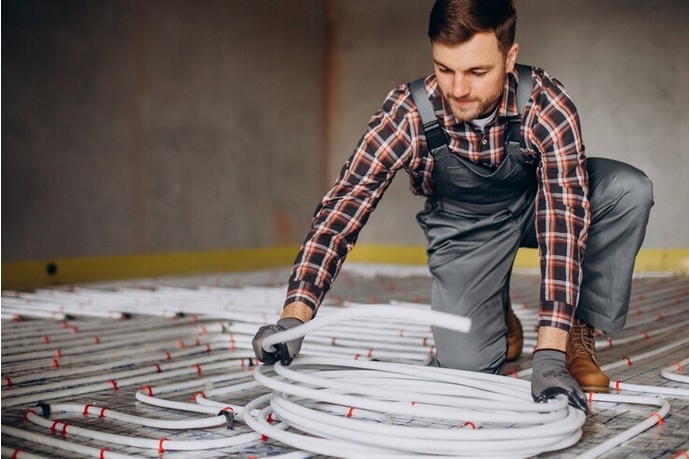Introduction
Energy efficiency is a critical concern in today's world, as we grapple with environmental issues and the rising costs of energy. Thermal pipe insulation plays a pivotal role in achieving energy efficiency, both in residential and industrial settings. In this comprehensive guide, we will explore the importance of thermal pipe insulation, the types of insulation materials available, its applications, and the significant benefits it offers in terms of energy conservation, cost savings, and environmental sustainability.
Understanding Thermal Pipe Insulation
Thermal Loss and the Need for Insulation
The fundamental principle behind thermal pipe insulation is to prevent the loss of heat from pipes carrying hot fluids and to prevent the ingress of heat into pipes carrying cold fluids. Without proper insulation, heat naturally migrates from the hotter medium to the cooler environment, leading to inefficiencies and increased energy consumption.
Types of Insulation Materials
Several insulation materials are available, each with unique characteristics suited to specific applications:
-
Fiberglass Insulation: Fiberglass insulation is one of the most common materials used in thermal pipe insulation. It is cost-effective, easy to install, and provides good thermal resistance.
-
Foam Insulation: Foam insulation, including rigid foam boards and spray foam, offers excellent insulating properties and is particularly useful in applications with limited space.
-
Mineral Wool Insulation: Made from minerals and rocks, mineral wool insulation is non-combustible and provides both thermal and acoustic insulation.
-
Polyurethane Insulation: Polyurethane foam insulation has a high R-value per unit thickness, making it ideal for applications where space is a constraint.
-
Reflective Insulation: Reflective insulation is effective in hot climates, as it reflects radiant heat away from the pipes, keeping them cooler.
-
Vapor Barrier Insulation: Vapor barrier insulation prevents moisture from penetrating the insulation, making it suitable for areas prone to condensation.
The Benefits of Thermal Pipe Insulation
1. Energy Conservation
The primary benefit of thermal pipe insulation is energy conservation. By minimizing heat loss or gain in pipes, insulation reduces the need for continuous heating or cooling. This leads to a significant reduction in energy consumption, resulting in lower utility bills. In an era where environmental consciousness and sustainability are paramount, reducing energy usage is not only cost-effective but also a responsible choice.
2. Cost Savings
Reducing energy consumption translates to substantial cost savings in the long run. The initial investment in thermal pipe insulation materials and installation is often outweighed by the decreased energy bills. In industrial settings, where large amounts of hot or cold fluids are transported, the cost savings can be particularly significant.
3. Preventing Condensation
Condensation can be a significant issue in uninsulated pipes. When cold fluids flow through pipes in a warmer environment, condensation can form on the pipe's surface, leading to moisture-related problems. Thermal pipe insulation acts as a barrier, maintaining the temperature of the pipe's surface and preventing condensation, thereby extending the lifespan of the piping system and reducing maintenance costs.
4. Temperature Control
Temperature control is crucial in various applications, particularly in industries that rely on precise temperature regulation. Thermal pipe insulation helps maintain the desired temperature of the transported fluids, ensuring that the processes and products remain consistent. This is essential in sectors such as food processing, pharmaceuticals, and petrochemicals, where temperature fluctuations can have a direct impact on product quality and safety.
5. Environmental Sustainability
With the growing emphasis on environmental sustainability and reducing carbon footprints, thermal pipe insulation is an eco-friendly solution. By conserving energy, insulation contributes to a smaller environmental impact. This not only benefits your organization or household but also aligns with global efforts to mitigate climate change.
Applications of Thermal Pipe Insulation
1. HVAC Systems
In heating, ventilation, and air conditioning (HVAC) systems, thermal pipe insulation is indispensable. It helps maintain the efficiency of these systems by reducing heat loss or gain in pipes, ensuring that the desired temperature is maintained.
2. Industrial Processes
Industries that rely on the transportation of hot or cold fluids extensively use thermal pipe insulation to maintain product quality, safety, and process efficiency. Applications include chemical processing, food and beverage production, and oil refineries.
3. Plumbing
In plumbing systems, thermal pipe insulation prevents freezing in cold weather, reducing the risk of burst pipes and subsequent property damage. It also reduces the time it takes for hot water to reach the tap, saving both water and energy.
4. Fire Safety
Fire protection systems often include thermal pipe insulation to maintain the integrity of pipes during a fire. This ensures that water or fire suppressants can be efficiently delivered to where they are needed, helping to prevent further damage.
5. Energy Infrastructure
In power plants, district heating systems, and steam distribution networks, thermal pipe insulation is integral to the overall efficiency and safety of these systems. It helps ensure that energy is transported with minimal loss, reducing operating costs.
Conclusion
In conclusion, mastering energy efficiency through thermal pipe insulation is an imperative in today's world. It is a fundamental element in minimizing energy consumption, reducing costs, and promoting environmental sustainability. Understanding the different types of insulation materials and their applications is crucial for making informed decisions that align with specific needs. Whether you are a homeowner looking to lower your energy bills, a facility manager striving to enhance operational efficiency, or an engineer responsible for designing energy-efficient systems, thermal pipe insulation is an essential consideration.
As the world becomes increasingly conscious of the need for energy conservation and environmental responsibility, the role of thermal pipe insulation becomes even more significant. It is not just a practical choice; it is a responsible choice that can lead to cost savings, energy conservation, and a smaller carbon footprint. In a world where sustainable solutions are paramount, thermal pipe insulation is a key component in the journey toward a greener and more energy-efficient future.


No comments yet